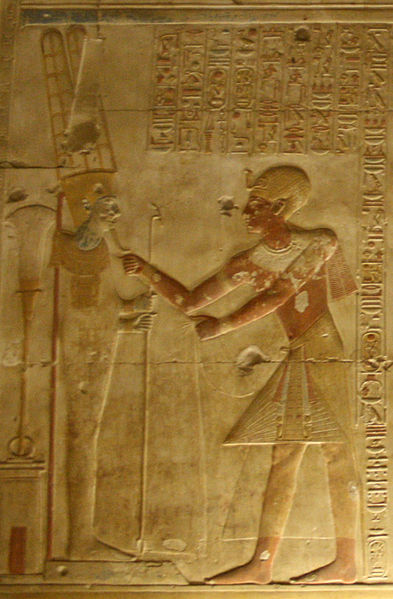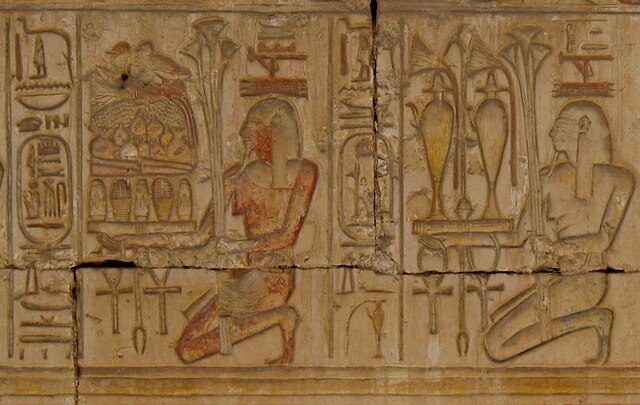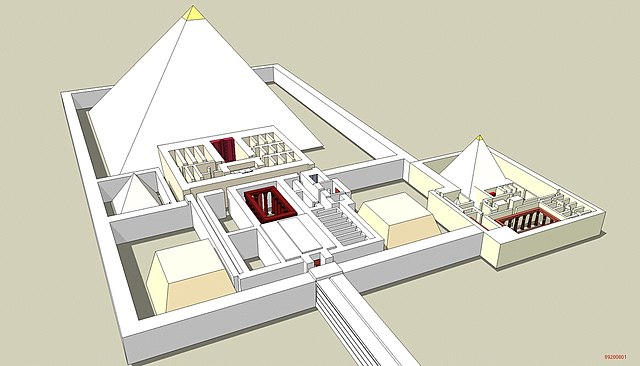The Karnak Temple Complex, commonly known as Karnak, comprises a vast mix of temples, pylons, chapels, and other buildings near Luxor, Egypt. Construction at the complex began during the reign of Senusret I in the Middle Kingdom and continued into the Ptolemaic Kingdom, although most of the extant buildings date from the New Kingdom. The area around Karnak was the ancient Egyptian Ipet-isut and the main place of worship of the 18th Dynastic Theban Triad, with the god Amun as its head. It is part of the monumental city of Thebes, and in 1979 it was added to the UNESCO World Heritage List along with the rest of the city. Karnak gets its name from the nearby, and partly surrounded, modern village of El-Karnak, 2.5 kilometres north of Luxor.
Pillars of the Great Hypostyle Hall from the Precinct of Amun-Re
Open papyrus umbel capitals and architrave on the central columns of the Hypostyle Hall
Gate at Karnak. Brooklyn Museum Archives, Goodyear Archival Collection (before 1923)
Obelisks of Hatshepsut: a tall obelisk stands above a field of rubble and bricks; in the foreground lies the top of another obelisk. (1906)
Egyptian temples were built for the official worship of the gods and in commemoration of the pharaohs in ancient Egypt and regions under Egyptian control. Temples were seen as houses for the gods or kings to whom they were dedicated. Within them, the Egyptians performed a variety of rituals, the central functions of Egyptian religion: giving offerings to the gods, reenacting their mythological interactions through festivals, and warding off the forces of chaos. These rituals were seen as necessary for the gods to continue to uphold maat, the divine order of the universe. Housing and caring for the gods were the obligations of pharaohs, who therefore dedicated prodigious resources to temple construction and maintenance. Out of necessity, pharaohs delegated most of their ritual duties to a host of priests, but most of the populace was excluded from direct participation in ceremonies and forbidden to enter a temple's most sacred areas. Nevertheless, a temple was an important religious site for all classes of Egyptians, who went there to pray, give offerings, and seek oracular guidance from the god dwelling within.

The Temple of Isis at Philae, with pylons and an enclosed court on the left and the inner building at right. Fourth to first century BC
Low relief of Seti I performing rituals for the god Amun, from Seti's mortuary temple at Abydos. Thirteenth century BC
Sunk relief of personified provinces of Egypt bearing offerings for the temple god, from the mortuary temple of Ramesses II at Abydos. Thirteenth century BC
Reconstruction of the Old Kingdom pyramid temple of Djedkare Isesi, with causeway leading out to the valley temple. Twenty-fourth century BC.








